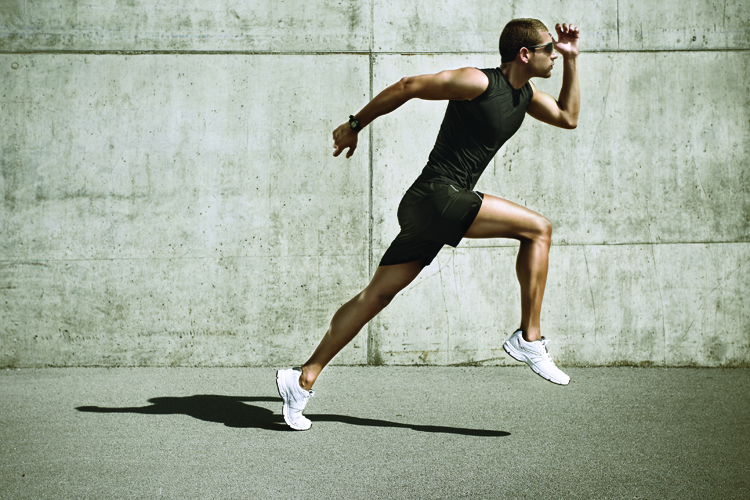How to get leaner and stronger using cardio
Want to get lean and strong? Speeding up your cardio is the answer, says trainer Anthony Shaw

There’s one method of training that will help you get leaner, stronger and more muscular, improve your skin and cardiovascular function, make you feel healthier and cause your stubborn calves to grow. What’s more, you can do it in one or two 20-minute sessions each week – and it doesn’t have to cost you anything. What’s this magical training system? Sprinting.
I didn’t think running could help build strength. Was I wrong?
Traditionally, people have lifted weights to build muscle and done cardio to burn fat. The trouble is, this old-school approach of low-intensity, high-volume cardio work or high-rep strength endurance work leads to a reduction in the size of your type 2, or fast-twitch, muscle fibres (that’s bad), and even to some type 2b fibres being converted to type 2a (good for cardio, but bad for strength and power). It will also lead to an increase in glycogen and triglyceride stores in your muscles, which is why marathon runners don’t tend to get super-lean.
Basically, if you stick to lengthy cardio workouts you’ll get better at moving slowly for a long period. You’ll also get smaller, weaker and store more fat. Of course, a decent strength programme will offset these effects, but you’d essentially be running hard and not getting anywhere.
So should I do long cardio sessions?
Not if you want to look ripped. Cardio can help you to lose fat but it won’t do anything to build muscle. Cardio is only strictly necessary when an individual is so overweight it’s the highest intensity they can handle. However, once they’ve adapted to it, the programme should get tougher. Which brings us to sprinting.
Why is sprinting better than jogging?
Two words: hormonal balance. Sprinting stimulates the release of a huge amount of anabolic hormones into your bloodstream. As a result, your muscles become more insulin-sensitive, so they readily absorb more nutrients for growth, you oxidise more fat and the stiffness of large arteries is even reduced, which is great for staving off heart disease. Sprinting also uses a lot of muscles, specifically the entire posterior chain, as well as your quads and hip flexors. Sprinting as fast as you can is the definition of high-intensity exercise – the impact and fast muscular contractions force you to work hard.
I’m convinced. Where do I start?
Start with four or five 100m sprints with 90 seconds’ rest between each one. Then add one to two sprints each week until you’re at ten reps. Once you’re capable of performing ten 100m sprints with 90 seconds’ rest, you should be able to vary the workload and start having some real fun.
To add variety, try running hills, changing around the rest intervals, performing a second, shorter recovery workout in the same week (roughly 60% of the volume of your main sprint day) or doing sprints on the rower or bike. Just stay within the hormonal principles of short rest periods and moderate to high-intensity levels and you’ll reap the rewards.
Sign up for workout ideas, training advice, reviews of the latest gear and more.
Play fast and loose
Got the hang of sprinting? Vary things with these workouts
1. 6 x 200m sprint with 2min rest
Progress by adding two sprints each week for two weeks until you’re at ten reps.
2. 6 x 80m sprint and back ( 160m overall) with 90sec rest
Running a set distance and back requires two acceleration phases. You’ll have to work hard to get back up to speed on the return sections.
3. 6 x 100m sprint with 60sec rest
Progress by adding 20m to each sprint every week, so in week two you’ll do 6 x 120m, in week three you’ll do 6 x 140m and so on. Keep the rest at 60sec.
Coach is a health and fitness title. This byline is used for posting sponsored content, book extracts and the like. It is also used as a placeholder for articles published a long time ago when the original author is unclear. You can find out more about this publication and find the contact details of the editorial team on the About Us page.

